Edimentals is a new term for growing flowers and vegetables together. Gardens today are often too small to have a separate ‘veg patch.’
Of course, traditional vegetable growing won’t fit into your herbaceous border. If you plant a row of carrots beside your roses, you’ll have a gap when you harvest them.
So this means looking at a new way of looking at growing food. Or, more precisely, returning to the old ways of growing food, typical of the original cottage gardens. There are a number of strands to this.
Edimentals goes back to the original principles of the cottage garden. All these flowers at the Abbey Physic Community Garden are edible and have other uses, too.
So I visited the Abbey Physic Community Garden in Faversham, Kent, to talk to manager Suzanne Campbell, horticultural trainer, Paul Muddle and permaculture trainer Jo Barker about combining food and edible flowers. There is a ‘forest garden’ and their next project is a ‘Community Vegetable Permaculture Bed.’
Permaculture is a system of growing that aims to be sustainable and self-sufficient. Its methods involve the use of perennial vegetables and edible flower plants, letting go of some of the definitions that restrict plants to a purely ornamental use.
The first strand of combining food and flower growing is to grow more perennial or cut-and-come-again vegetables, which can be harvested without digging them up.
And the second means understanding which flowers are edible or have other uses.
Then re-visit the value of weeds, which historically have been used medicinally or for food.
And use self-seeding plants because they fill gaps without your having to buy or plant them.
Foraging, too, is part of it all – with people increasingly realising they can ‘forage’ in their own garden.
Safety first – never eat a plant unless you have checked it’s edible!
Jo says that the first rule of foraging is that you shouldn’t pick a plant to eat unless you are a 100% certain that it’s safe. And that applies to growing an edible cottage garden too!
Many flowers have different common names around the world. You can’t rely on a daisy in one person’s garden being the same as a daisy in another’s. Their botanic names may start with Bellis, Erigeron or Leucanthemom. A plant’s botanic name (sometimes called ‘Latin name’) is the same all round the world.
So make sure you know what a plant is and what you can do with it. Jo has a plant app called Plants for A Future, which lists the uses for a wide number of plants. They stress that you must be sure that you identify a plant correctly.
And when you are eating something new for the first time, only eat a small amount.
The Abbey Physic Garden and edimentals
The new Perennial Vegetable Bed has been designed by Jo Barker using permaculture principles. It’s based on using perennial vegetables and herbs, mixed with cut and come again leaves and self-seeding flowers, vegetables – and even weeds – to create an area where food is grown continuously throughout the year.
Previously this was a traditional border, with rows of vegetables planted in spring and harvested later in the year. Now vegetables such as perennial cabbages and kale will stay in the ground for 2-5 years, asparagus and artichokes will last around 20 years.
As so many of our traditional vegetables are annuals, not perennials, this means trying unusual varieties of perennial vegetable such as Korean celery and Caucasian spinach. You can harvest their leaves over a number of years, without digging up the plant.
The aim is to grow food for the community kitchen and cafe. And they also want to demonstrate a more sustainable, less labour intensive way of growing food. ‘We want to encourage people to think about foraging in the garden,’ says Suzanne.
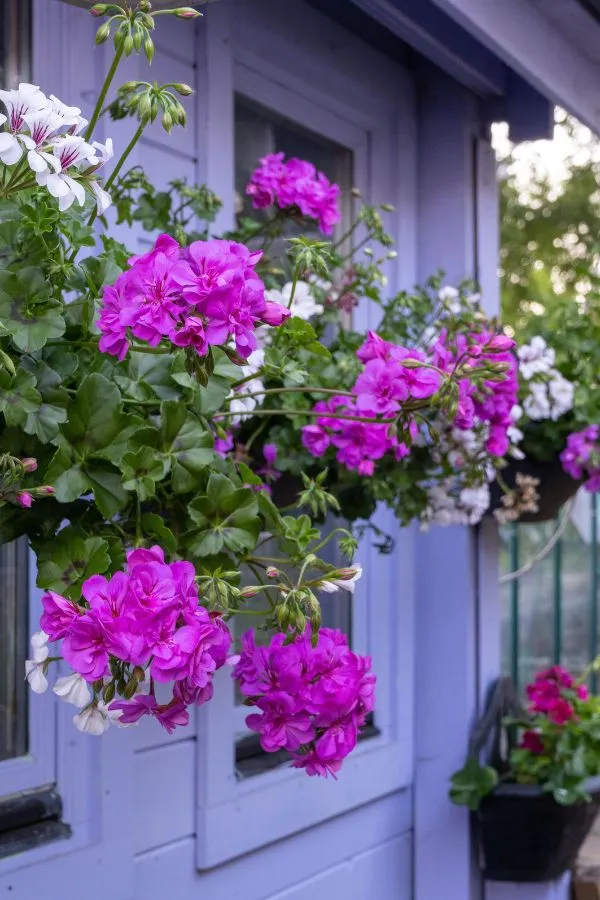
Growing food and flowers for the Abbey Physic cafe and workshops, introducing people to the idea of foraging in their own gardens.
You probably already have an edible garden!
Jo says that most people have the framework of an edible garden. ‘Daisies and roses are edible, as are dandelions and nettles. Most people have access to those.’
(If you’re cutting nettles or other weeds to consume, make sure you know whether they’ve been treated with chemicals. ) Be curious, she suggests.
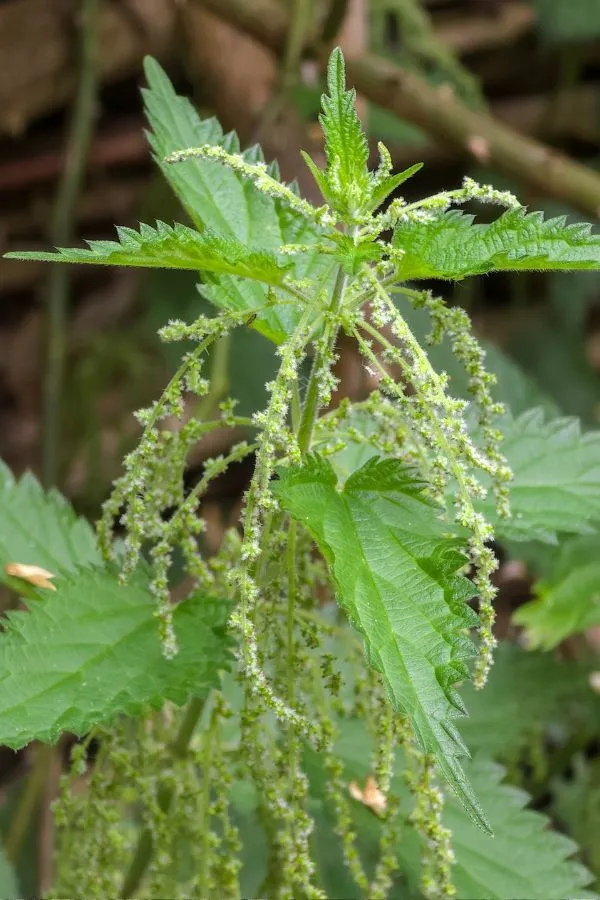
You can eat nettles in soups, stews and teas. These nettles are going to seed, but Jo says you can keep fresh leaves coming by chopping them back.
Top perennial vegetables for cottage garden edimentals
At the Abbey Physic, they’re planting artichokes, asparagus and rhubarb, plus less familiar perennial vegetables such as Caucasian spinach.
Caucasian spinach (Hablitzia tamnoides) is a climbing shade lover, which grows to around three metres high over the year. You can pick the leaves and they have a mild spinach taste.
You could also grow Korean celery (Dystaenia takesimana). This is a perennial that tastes like a mixture between lovage and celery. You can harvest the leaves all through the winter and it has pretty white flowers in summer.
You can find perennial pea and bean varieties. In some warmer parts of the UK runner beans will be perennial.
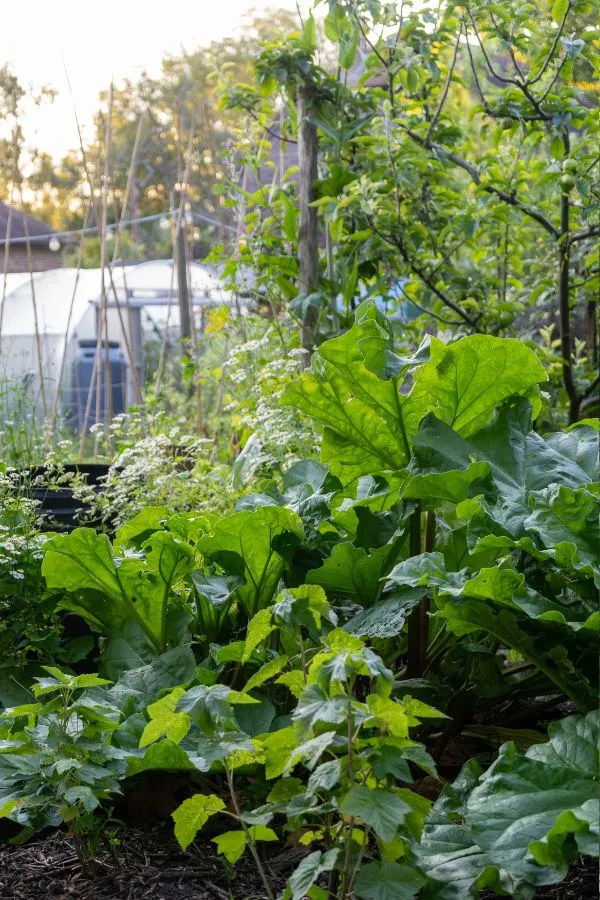
Rhubarb at the Abbey Physic – a familiar but decorative plant with big architectural leaves.
Add edible or useful flowers
There has never been as much of a division between flowers and food as you might think. Dahlias were originally imported as a food, while runner beans were introduced as flowers. Now that has reversed, but both are decorative and edible.
At the Abbey Physic, they’re growing hollyhocks and mallow, using the leaves for soups and stews and the flowers for salads. Other edible flowers include roses, calendula, day lilies (which are widely used in Chinese cooking, see Daylilies are Edible here) and cannas.
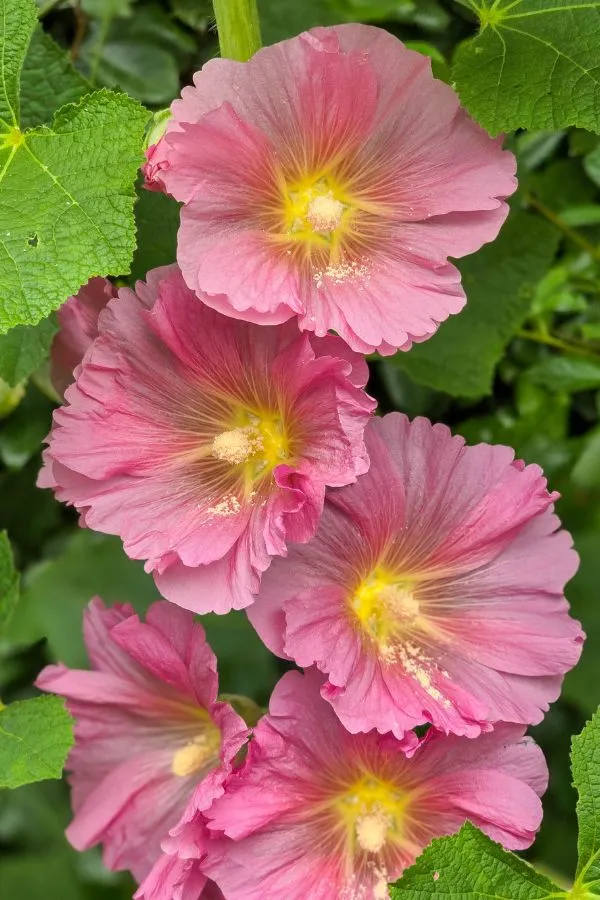
Hollyhocks are one of the most useful edimentals. Jo says you can use the leaves and the flowers in soups, salads and stews.
There are more edible flowers here with advice from Tanya Anderson of Lovely Greens. She combines flower and food growing, and also uses plants to make candles, soaps and other useful things.
Geraniums at the Abbey Physic. They’re edible and pretty a cottage garden staple.
Use vertical space – include fruit and nut trees and bushes
Fruit trees are a classic cottage garden element. If you’re short of space, you can train them along walls.
Jo also suggests nut trees and bushes, such as hazelnut. Walnut and sweet chestnut trees are a good source of nuts, too.
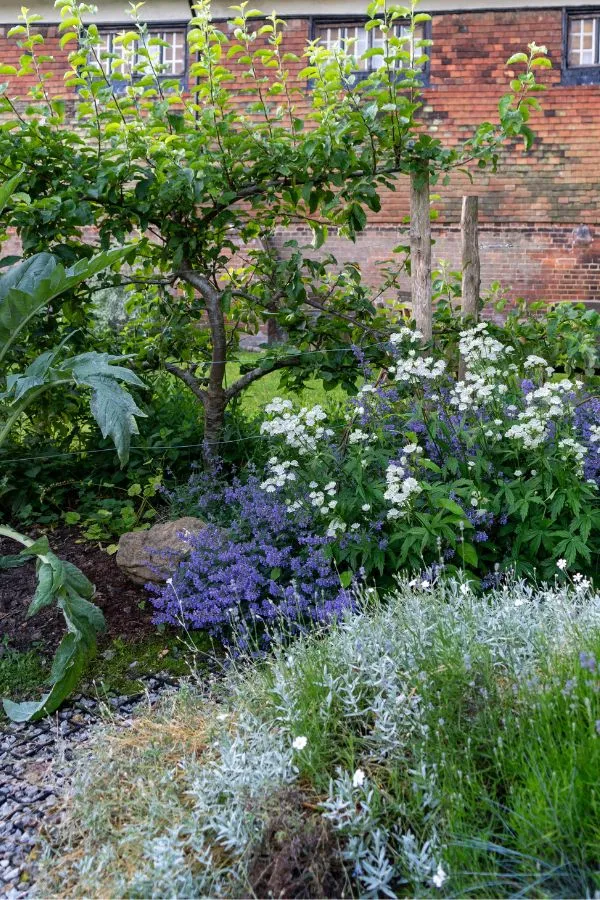
Espaliered apple trees growing with flowers at the Abbey Physic Garden.
And you can add shrubs with berries to your borders, such as gooseberries or blueberries. Blueberries have lovely autumn leaf colour, but check whether your soil is acid enough to grow them.

There are many layers to an edimentals garden. Trees and climbers can all be edible or useful. Moongate at the Abbey Physic Garden.
Discover your edible weeds
Jo says that rosebay willowherb is one of the most nutritious plants on the planet. It used to be made into tea, before our more usual camellia-based teas became popular. Its leaves can be eaten.
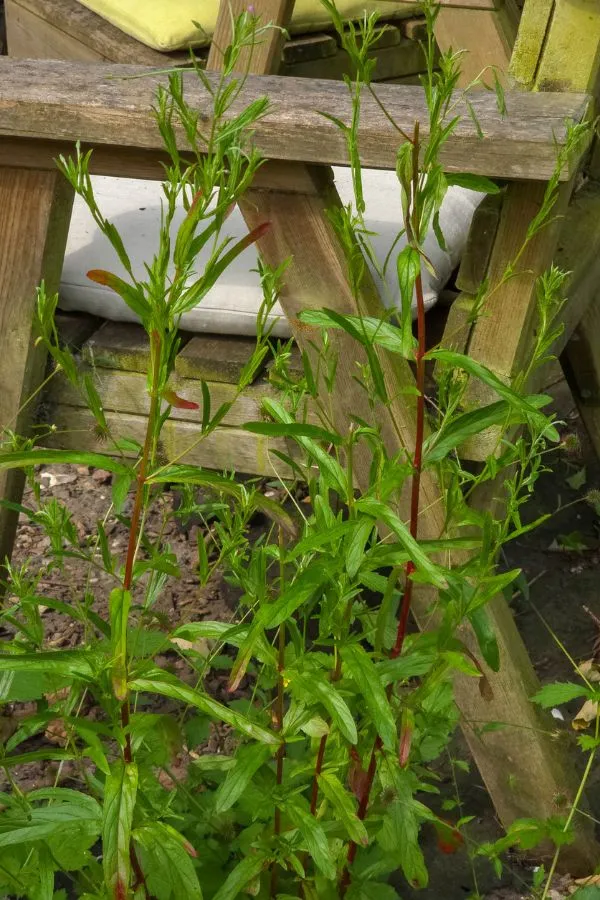
Rosebay willowherb – a common weed which makes a good tea and is highly nutritious.
Nettles are also highly nutritious in soups, stews and teas. Dandelion leaves and flowers can be added to salads.
Once again,check weeds carefully to identify them as safe before consuming them. Jo says that a large amount of the garden is edible – but it isn’t all edible! And in my How to Puppy Proof Your Garden post, a horticultural trainer told me that he thought around 20% of any garden is poisonous to people and pets. That leaves about 80% as edible – but make sure you know the difference.
Create extra growing space with pots
You can grow lots of vegetables in pots and this makes it easier to combine with ornamental growing. At the Abbey Physic this year, they’re growing all their potatoes in pots or sacks.
At Adam Frost’s Chef’s Table garden at BBC Gardeners World Live this year, he grew herbs, chard and hostas in pots. (Hostas are edible leaves, too!) There were several edimental gardens at this years’ show.
Visit the Abbey Physic Garden in Faversham, Kent
The Abbey Physic Community Garden is open to visitors and they also run workshops and courses.
There’s a cafe, a Men’s Shed and several areas experimenting with different kinds of growing, such as a Food Forest, the Perennial Vegetable Bed and various wildlife friendly areas.
It’s based in the heart of ancient Faversham, just off Abbey Street, which is one of Britain’s best preserved Medieval streets.

Leave a Reply